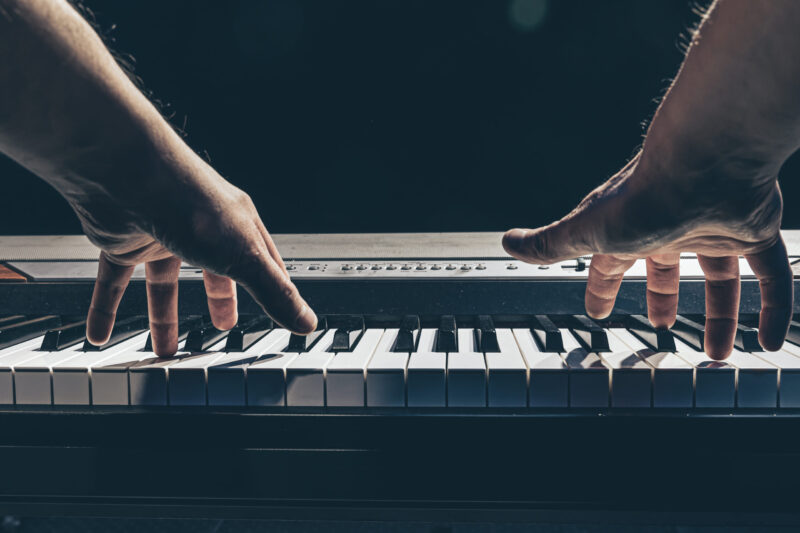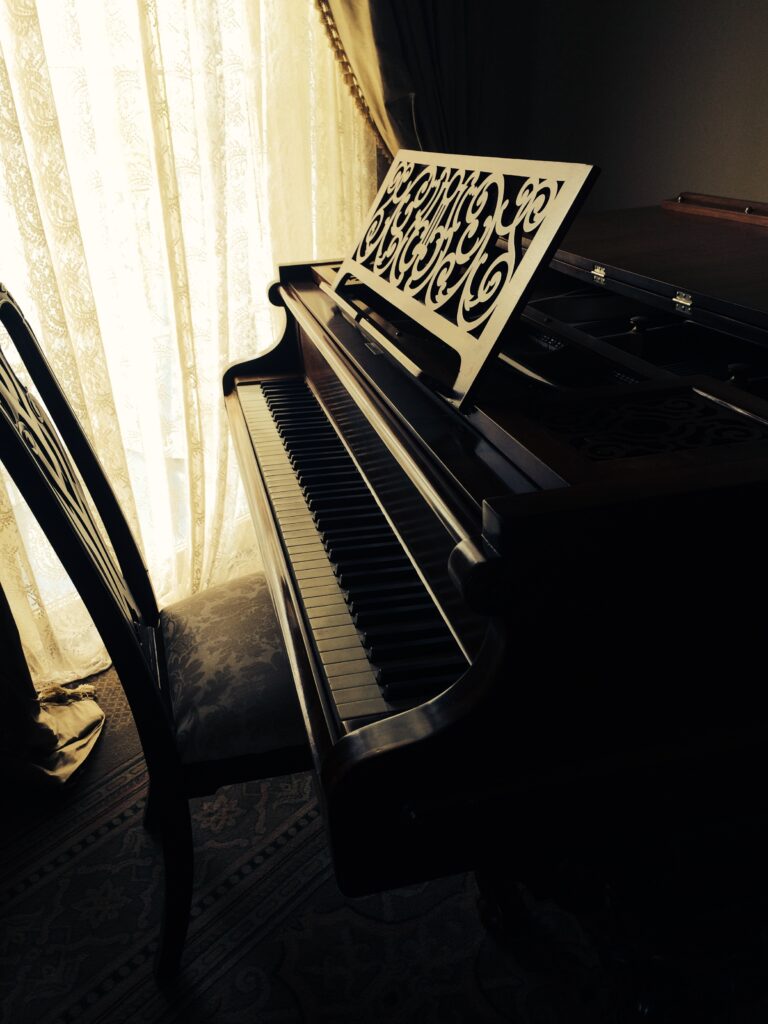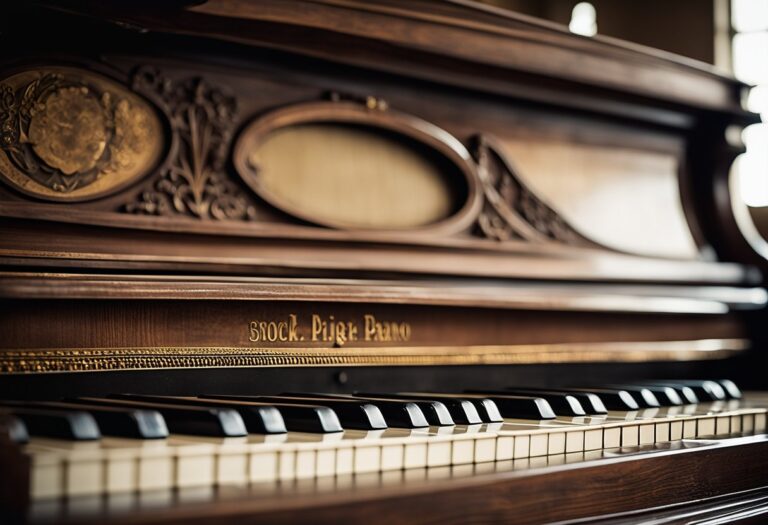Beyond the Sheet Music: Unconventional Ways to Master Piano Playing
In the captivating realm of piano melodies, a question lingers like a whispered melody: can the piano be played without the guiding notes of sheet music? The allure of this possibility beckons us into a world of musical exploration, where the promise of playing by ear unfolds like a timeless sonata.
The art of playing the piano without the constraints of sheet music, often referred to as playing by ear, holds within it the enchanting ability to listen to a melody and bring it to life upon the piano keys. This seemingly daunting feat becomes a journey of skill and dedication, a testament to the transformative power of practice and perseverance.

As we embark on this odyssey of musical discovery, the promise of resources and guidance emerges as a beacon of hope, offering a pathway to develop the art of playing by ear. Online tutorials, instructional videos, and a wealth of knowledge stand as companions in this journey, inviting aspiring pianists to embrace the art of playing by ear.
So, dear seeker of musical expression and freedom, let us delve into the heart of this enigma, as we unravel the art of playing the piano by ear. Within this symphony of possibilities, the melody of skill and dedication awaits, inviting you to discover the timeless art of playing by ear and the promise of transformation that resonates within its hallowed embrace.
Understanding Musical Notation

Evolution of Musical Notation
Musical notation has been evolving for centuries, starting with simple symbols to represent pitch and rhythm, to the complex system we have today. The earliest forms of musical notation were developed in ancient Greece, using letters of the alphabet to represent musical notes. Later, neumes were developed in medieval Europe, which were symbols that indicated the shape of a melody.
In the Renaissance era, the modern system of musical notation was developed, which used a staff with five lines and four spaces to represent pitch. Notes are placed on the staff to indicate their pitch and duration. Over time, new symbols were added to indicate dynamics, tempo, and other musical elements.
Reading Music vs. Playing By Ear
Reading sheet music is an important skill for any musician, but it is not the only way to play the piano. Some musicians prefer to play by ear, which means they listen to a piece of music and then play it back without reading any sheet music. Playing by ear requires a good ear for pitch and rhythm, as well as the ability to memorize music.
While reading sheet music can help learn new pieces and understand musical theory, playing by ear can be a valuable skill for improvisation and playing with other musicians. It is also a great way to develop your unique style and interpretation of a piece of music.
Understanding musical notation is a crucial aspect of piano playing, yet it is not the sole means of creating music. Whether you favour reading sheet music or playing by ear, each method offers its unique advantages and contributes to the development of a well-rounded musician.
Fundamentals of Piano Playing

Keyboard Layout and Note Identification
To play the piano without reading music, you must first understand the keyboard layout and note identification. The piano keyboard consists of 88 keys, which are divided into white and black keys. The white keys represent the natural notes (A, B, C, D, E, F, G), while the black keys represent the sharps and flats.
To identify the notes on the keyboard, you can use the following mnemonics:
- Treble Clef (right hand): Every Good Boy Deserves Fudge (EGBDF) for the lines and FACE for the spaces.
- Bass Clef (left hand): Good Boys Do Fine Always (GBDFA) for the lines and All Cows Eat Grass (ACEG) for the spaces.
Basic Piano Techniques
Once you have a basic understanding of the keyboard layout and note identification, you can start practising basic piano techniques. These include:
- Hand position: Keep your hands relaxed and curved, with your fingers resting on the keys. Your thumbs should be on middle C (the white key to the left of the two black keys in the middle of the keyboard).
- Finger placement: Each finger is assigned a number (1-5), with the thumb being 1 and the pinky being 5. Use the correct finger for each note to develop good finger dexterity.
- Playing scales: Scales are a fundamental exercise that helps you develop finger strength, coordination, and muscle memory. Start with the C major scale (all white keys), and gradually work your way up to more complex scales.
- Chords: Chords are a group of notes played together to create harmony. Start with simple chords (such as C major or G major), and practice playing them smoothly and evenly.
By mastering these fundamentals, you can start playing the piano without reading music and develop your unique playing style.
Learning Methods Without Reading Music

Learning to play the piano without reading music is possible. Many musicians have done it and continue to do so. Below are some methods you can use to learn to play the piano without reading sheet music.
Playing By Ear
Playing by ear is one of the most popular methods for learning to play the piano without sheet music. This method involves listening to a song and then figuring out the notes by ear. It takes time and practice to develop this skill, but it can be very rewarding. You can start by listening to simple songs and then gradually move on to more complex pieces.
Using Visual Aids
Visual aids such as chord charts, diagrams, and videos can be very helpful when learning to play the piano without sheet music. Chord charts show you the chords for a particular song, while diagrams show you where to place your fingers on the keys. Videos can help you see how a song is played and give you a better understanding of the techniques involved.
Improvisation and Experimentation
Improvisation and experimentation are also great methods for learning to play the piano without sheet music. Improvisation involves playing without a set plan or structure, while experimentation involves trying out different techniques and styles to see what works best for you. These methods can be a lot of fun and can help you develop your unique style of playing.
Mastering the piano without relying on sheet music is entirely achievable. Embracing methods like playing by ear, utilizing visual aids, and engaging in improvisation and experimentation can effectively hone your skills and propel you toward becoming a proficient pianist.
Benefits of Playing Piano Without Reading Music

If you have always wanted to play the piano but have been intimidated by the idea of reading sheet music, there is good news. You can still learn to play the piano without reading music and enjoy many benefits.
Creativity and Expression
Playing the piano without reading music can allow you to be more creative and expressive in your playing. When you are not focused on reading notes, you can focus on exploring different sounds and experimenting with different techniques. This can lead to a more personalized and unique style of playing that is truly your own.
Cognitive and Memory Skills
Playing the piano without reading music can also help improve your cognitive and memory skills. When you are not relying on sheet music, you are forced to rely on your memory and your ability to think on your feet. This can help improve your memory and cognitive abilities, making it easier to remember things in other areas of your life as well.
In addition, playing the piano without reading music can help improve your hand-eye coordination and fine motor skills. This can be especially beneficial for children who are still developing these skills.
Overall, playing the piano without reading music can be a fun and rewarding experience that offers many benefits. Whether you are looking to improve your creativity, and cognitive abilities, or enjoy playing music, learning to play the piano without reading music is a great option to consider.
Challenges and Limitations
Complex Pieces and Repertoire Expansion
While it is possible to play the piano without reading music, it can be challenging to tackle more complex pieces and expand your repertoire. Without the ability to read sheet music, you may struggle to learn new songs that are not already familiar to you. This can limit the variety of music you can play and may make it difficult to progress as a pianist.
Another challenge you may face is the inability to accurately replicate a piece of music. When playing by ear, it can be difficult to remember every note and rhythm, which can result in mistakes or inaccuracies in your performance. This can be frustrating and may lead to a lack of confidence in your abilities.
Communication with Other Musicians
If you plan on playing music with other musicians, not being able to read sheet music can be a limitation. Sheet music serves as a common language among musicians, allowing them to communicate and collaborate effectively. Without this shared language, it may be difficult to coordinate with other musicians and create a cohesive performance.
Additionally, if you are interested in pursuing music as a career, not being able to read sheet music can limit your opportunities. Many professional musicians are expected to be able to read and interpret sheet music, and not having this skill may make it difficult to find work or collaborate with other professionals.
Overall, while it is possible to play the piano without reading sheet music, it can be a limitation in terms of repertoire expansion and communication with other musicians. However, with dedication and practice, it is possible to overcome these challenges and become a proficient pianist.
Frequently Asked Questions
What are some easy piano songs for beginners who don’t read sheet music?
If you are a beginner who doesn’t read sheet music, don’t worry. There are many easy piano songs that you can learn by ear or from tutorials. Some popular songs include “Happy Birthday,” “Twinkle Twinkle Little Star,” and “Mary Had a Little Lamb.” You can also find many tutorials and simplified versions of popular songs on YouTube.
Is it possible to become proficient at piano using only ear training and memorization?
While reading sheet music is a valuable skill for pianists, it is possible to become proficient at piano using only ear training and memorization. Many professional pianists have developed their skills through playing by ear and memorization. However, it is important to note that learning to read sheet music can help you understand music theory and become a more well-rounded musician.
How do pianists manage to play if they cannot read music notation?
Pianists who cannot read music notation rely on their ears and memory to play. They may listen to recordings or watch videos of other musicians playing a piece and then learn it by ear. Some pianists may also create their own notation or use alternative methods to help them remember the music.
What are the methods for learning piano for adults who do not understand sheet music?
Adults who do not understand sheet music can still learn piano through various methods. One option is to take lessons from a teacher who specializes in teaching by ear or using alternative methods. Another option is to use online tutorials or instructional books that focus on playing by ear or using alternative methods.
Can mastering piano by ear lead to the same skill level as reading music?
Mastering piano by ear can lead to a high level of skill and musicianship, but it is important to note that reading sheet music can also be beneficial. Learning to read sheet music can help you understand music theory and become a more well-rounded musician. Ultimately, the level of skill you achieve depends on your dedication and practice.
How common is it for professional pianists to play without reading music?
It is not uncommon for professional pianists to play without reading music. Many pianists develop their skills through playing by ear and memorization. However, it is important to note that reading sheet music is a valuable skill that can help you understand music theory and become a more well-rounded musician.






